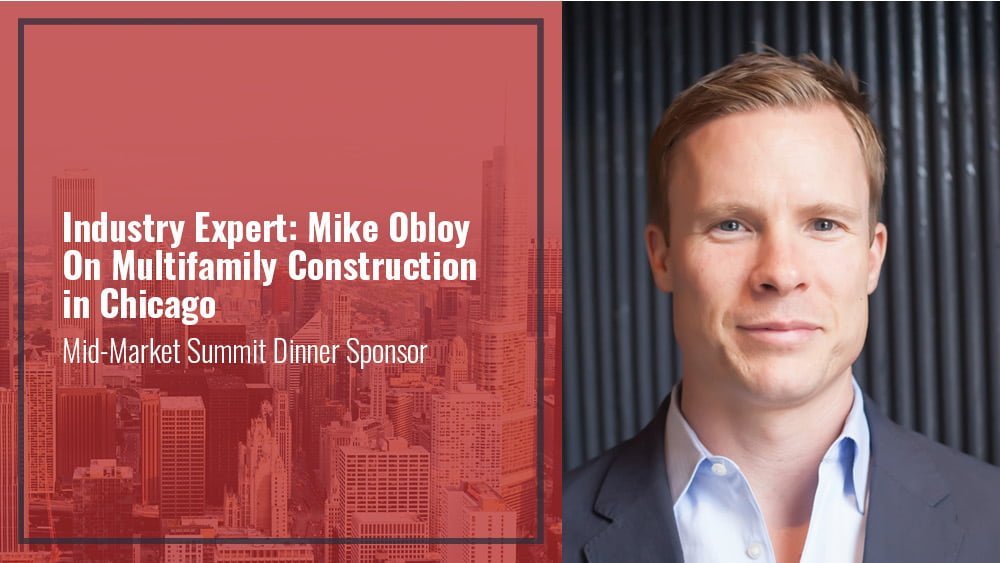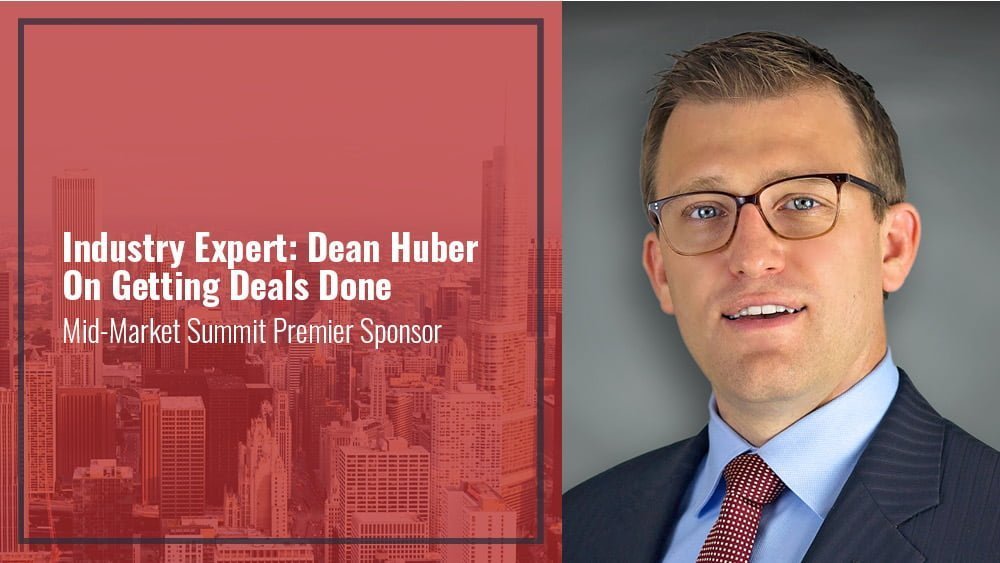03.12.20
Industry Expert: Mike Obloy On Multifamily Construction in Chicago

We are looking forward to our upcoming Mid-Market Summit event on Thursday, May 7 and wanted to take the time to speak with sponsor Mike Obloy of 3F Construction ahead of the event about all things construction.
Kiser: How did you get your start in construction?
Obloy: We started 3F during the depth of the Great Recession. We ran a series of distressed funds acquiring single-family homes and small apartment buildings from judicial sale. Our business model required us to quickly evaluate properties, identify costs and execute with minimal information. As a result, we procured materials, self-performed construction and managed all details to minimize costs. Over time, the team grew, and the business evolved changing focus to larger multifamily properties. We have spent considerable efforts improving our processes to control costs and identify ways to add value to our clients. Today we are actively managing several large renovations in Chicago and working on pre-construction planning for others.
Kiser: One project that I know you are working on is River City. Tell us about what you are doing there.
Obloy: River City is one of the most interesting and rewarding projects I have worked on as a contractor. Our team became involved early in the project allowing us to collaborate with the developer, design and leasing teams. Our value-engineering efforts have significantly reduced costs without compromising design. 3F’s role is limited to the apartment renovations including kitchens, bathrooms, flooring, door/trim, fan coils (HVAC) and fixtures. We are also adding in-unit laundry to each apartment, many of which are already occupied with new tenants, requiring holes to be cored for new risers. The team renovated approximately 300 units in the first year and we expect to finish the balance in 2020.
Learn more about Kiser Group’s Mid-Market Summit event.
Kiser: Rising construction costs, tariffs, Chicago policies and ordinances – how are you adapting to all these and today’s construction environment?
Obloy: A lot of our team’s efforts are focused on material procurement and value-engineering. The 2019 tariffs forced us to identify more efficient ways to execute our renovations without compromising quality. Examples include purchasing material in bulk, pre-fabricating items such as countertops and partnering with local manufacturers to produce custom cabinetry. Additionally, we continue to source high-quality materials manufactured in locations not impacted by the tariffs.
Our team also found success in working with the Department of Buildings to value-engineer design under the Alternative Code Approval Process. This program provides a uniform procedure for contractors to request project-specific approvals explicitly required by the building code or project-specific modifications of building code requirements. The most well-known example is the Alternative Plumbing Materials Pilot Program which, when approved, permits the use of Schedule 40 PVC for Waste/Vent piping in lieu of Cast Iron.
Kiser: Your company recently renovated The Edison at 5200 N. Sheridan in Edgewater, a 1920’s construction apartment building. Tell me about that project.
Obloy: The Edison presented a tremendous opportunity for our company because we were brought in as a Subcontractor to another local general contractor already working on the building. The owner was unhappy with the contractor renovating the apartments and looking to replace them. 3F was able to add value by helping navigate the permitting process and streamline the execution. Our efforts paid off as the owner engaged the same team to complete the sister property at 6801 N. Sheridan (The Vivian). 3F completed both buildings (a total of 350 units) in about 18 months.
Kiser: What would you say is the most valuable thing that your company offers when compared to other renovation companies in Chicago.
Obloy: Our team thinks like a developer, and we bring that with us to every project. We are always looking for ways to improve the design and marketability in cost-effective ways. We prefer to engage with our clients early in the process to optimize value and streamline execution. I truly believe that most of the value we create during the entire process is before we start construction when we are working through the design and cost analysis with our clients. There are so many ways to save money through value engineering when renovating properties.
Kiser: Having completed projects all over the City and in various price points, what finishes do you think value-add investors should be focused on?
Obloy: We see a lot of investors focused on modern and efficient kitchens, organized closet systems, and keyless entry hardware. Investors differentiate themselves and stay ahead of the curve with these types of finishes. As it relates to colors, we are currently seeing a lot of matte black fixtures, lighter, neutral tone flooring, white quartz countertops and white kitchen cabinetry. We encourage investors to look outside the typical finish packages for unique tile, hardware and lighting. These are ways that an investor can efficiently create a brand for the property. Many of these items can be purchased for the same price as the standard finish packages provided enough time is available to source the material from the proper vendor.
Learn more about Kiser Group’s Mid-Market Summit event.
